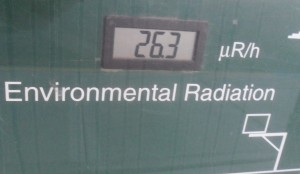14 June 2012, NHK (nippon housou kyoukai/Japan Broadcasting Corporation) reporting that Tokyo Electric Power Company (TEPCo) has discovered that on the 5th floor of the building housing Reactor 2 there is extreme levels of radiation.
The discovery was made by a robot used in the ongoing search to find where leaks are coming from. More than one year after the Fukushima Daiichi nuclear disaster began, TEPCo officials still can not find the origin of the many radiation leaks they believe must exist in the GE designed reactors.
The 5th floor of the building housing Reactor 2 shows no sign of major physical damage, yet is flooded with 880 millisieverts (880,000 microsieverts) per hour of radiation! It is 4.5 meters (14.7 feet) above the reactor.
To put it in perspective; many countries consider a yearly exposure of 2.7 millisieverts to be normal. That’s spread out over the entire year, not all at once! It also depends on the type of radiation, gamma radiation from a reactor that went critical is definitely bad.
TEPCo admits that Reactor 2 has spewed the greatest amount of radiation of all the damaged reactors, so far.
Finding leaks is of primary concern, because they must stop any radiation leaks in order to bring down lethal radiation levels, so that humans can remove the melted fuel rods and begin decommissioning the reactors.
Until TEPCo can find the leaks, and since no one in charge in Japan wants to dump sand, lead and concrete on the reactors, there is no chance of stopping the nuclear disaster reactors.
